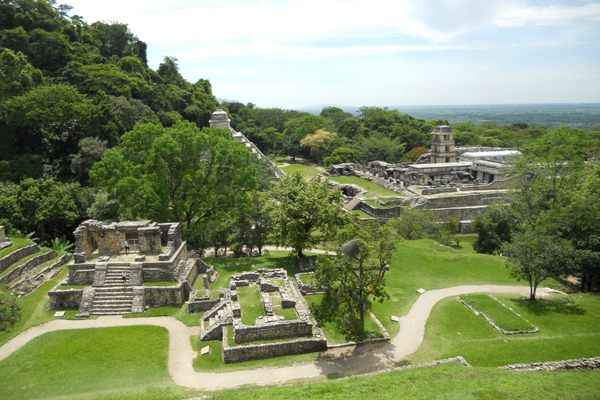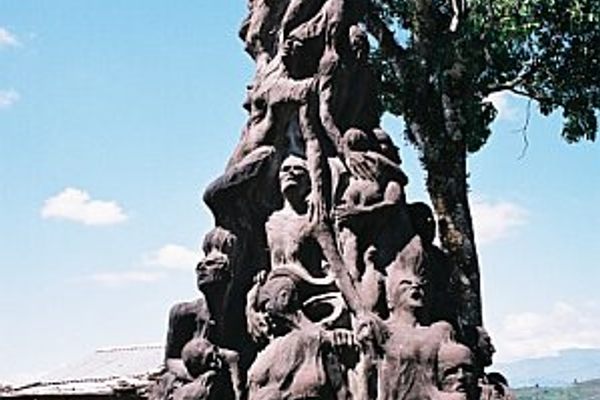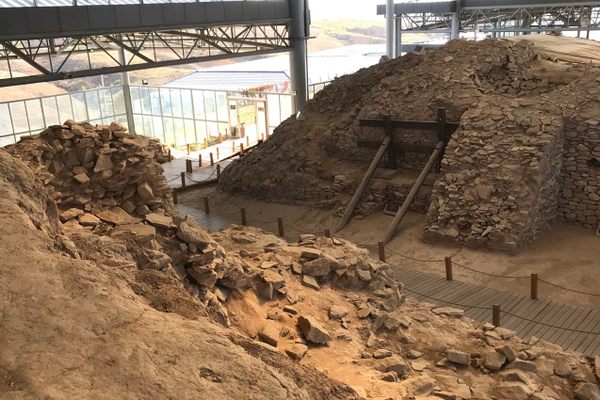Scarlet Macaws of Palenque
After becoming locally extinct, this esteemed avian now flies free in the forests around the ancient ruins.
If you are lucky during your visit to the Mayan ruins of Palenque in southern Mexico, you may catch a glimpse of the ruby-red plumage of the scarlet macaw, a living embodiment of the biological riches of the neotropics.
For almost a century, the scarlet macaw remained absent from the region. Their raucous squawks, once a common sound, were only a faded memory recounted in the local communities by elders. The species had been extirpated in the early 20th century due to habitat destruction caused by logging and agricultural expansion and the poaching of chicks to sell for the illegal pet trade.
Fortunately, in the late 2000s, a conservation program coordinated by the UNAM university was set up to restore the species to the forests. In 2013 and then again in 2014, groups of macaws that had been gradually habituated to life in the wild were released into Palenque National Park. The birds were closely monitored by biologists during this period and the program was concluded to be a success.
The return of the macaw to Palenque was a deeply symbolic moment for the communities that lived in the vicinity of the forests, where this bird had long been imbued with cultural significance. In the ancient Mayan culture it was frequently kept as a pet and its beautiful and esteemed plumes were traded as currency or used as colorful adornments in the headdresses of the elite class. Indeed, some of the most powerful kings and queens of this civilization even bore the honorific prefix “Moʼ” (“Macaw”) before their names.
The macaw was certainly not just a colorful status symbol, however. It also played a highly significant role in Mayan mythology, thanks to its close association with a villainous character central in the epic Mayan creation story, the Popol Vuh.
According to the legend, in the aftermath of the destruction of a previous world that had been swept away by a cosmic flood, a gigantic and ferocious macaw known as Vucub-Caquix flew over the waters terrorizing the survivors of the deluge. He proclaimed himself the Sun and the Moon and the liminal twilight zone between the two. Anyone who questioned the despot’s claim to rule over them was promptly attacked and dissenters were quite literally devoured. This unbridled arrogance and megalomania greatly angered the hero twin protagonists of the myth, Hunahpu and Xbalanque, and they resolved to end the reign of terror by assassinating the avian autocrat.
Knowing that Vucub-Caquix’s favorite roosting spot was the branches of a huge dead ceiba tree, they hid in the water among the roots armed with blow-guns packed with poison darts. When the monster arrived and took up his perch they shot the darts into his face, but this only succeeded in angering him and he attacked the twins, ripping off the arm of one with his razor-sharp beak. With the battle lost, the twins fled for their lives and managed to escape from the behemoth bird.
The twins later convinced an elderly couple to disguise themselves as shamanic healers and offer to “cure” the wounded and blinded monster with a potion of poisoned maize grains. This time the assassination went to plan, and after being disarmed with flattery, the vain Vucub-Caquix was tricked into drinking the potent poison. The toxins first weakened, then killed him, ending his despotic reign and heralding the dawn of a new and free world, in which humankind would eventually emerge triumphant.
Know Before You Go
The Palenque archeological site is open from 9 a.m. to 4:30 p.m. every day and entrance costs 57 pesos plus a further $ 27 pesos to access the national park. To observe the macaws, it's recommended that you bring decent binoculars and take one of the many local eco-tours into the national park.



















Follow us on Twitter to get the latest on the world's hidden wonders.
Like us on Facebook to get the latest on the world's hidden wonders.
Follow us on Twitter Like us on Facebook